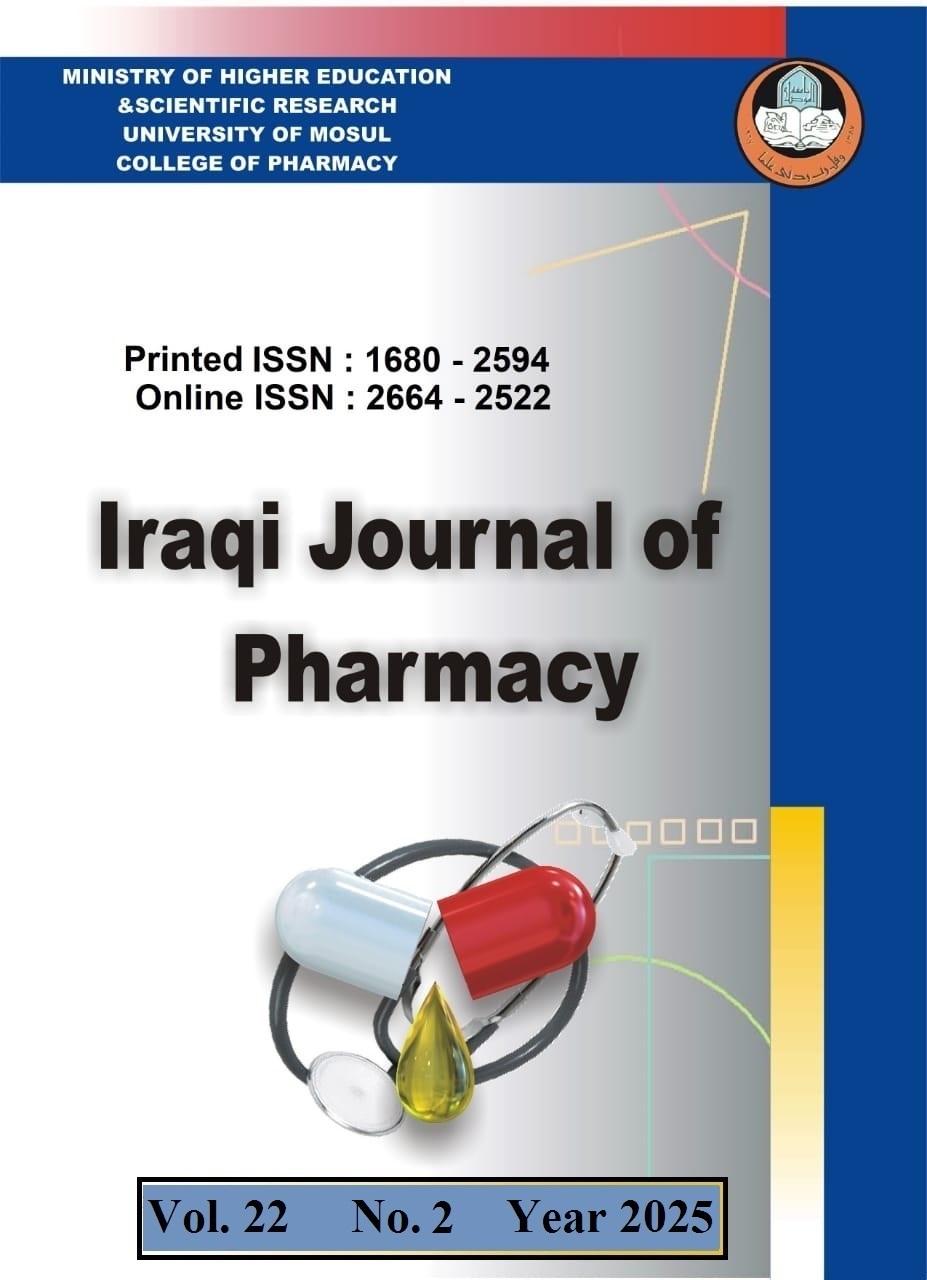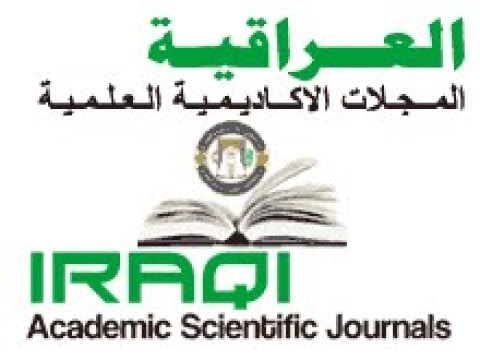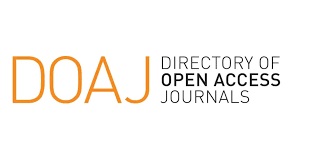Analysis of Some Regulatory Genes in Relation to Ferritin and Iron Metabolism among Thalassemia Patients in Mosul City
Abstract
Background: -thalassaemia is mostly caused by deletions in the alpha-globin gene complex, which result in either reduced or absent -globin chain synthesis. -globin chains are either absent or decreased in -thalassemia. Analyzing the regulatory genes (foxO1 and hepcidin) for iron and ferritin, in thalassemic patients was the goal of this study. Methods: Fifty individuals were selected for this study. Ten participants (5 females and 5 males) were healthy when they were recruited from general community and visited Al-Hadba'a Hospital (Mosul City) for blood withdrawal, while the forty patients (20 females and 20 males) have thalassaemia and ranged in age from 8 to 17. Results: Male participants had higher levels of iron and ferritin than female participants. Furthermore, there were notable differences in between male and female thalassaemic subjects. Additionally, ferritin and HbF were directly correlated with iron level and sex. Hepcidin expression analysis in healthy rather than thalassaemic participants found both down- and up-regulation; forkhead box O1 (foxO1) expression analysis demonstrated the reverse hemoglobin types pattern. Conclusion: In both thalassaemic and healthy subjects, gender was associated with the serum levels of iron, ferritin, and the genes that regulate them. Hepcidin and foxO1 synchronized with iron and ferritin in the human body.
References
- Babbs C, Brown J, Horsley SW, Slater J, Maifoshie E, Kumar S, et al. ATR-16 syndrome: mechanisms linking monosomy to phenotype. Journal of Medical Genetics. 2020;57(6):414-21.
- Barisani D, Pelucchi S, Mariani R, Galimberti S, Trombini P, Fumagalli D, et al. Hepcidin and iron-related gene expression in subjects with Dysmetabolic Hepatic Iron Overload. Journal of hepatology. 2008;49(1):123-33.
- Collins JF, Wessling-Resnick M, Knutson MD. Hepcidin regulation of iron transport. The Journal of nutrition. 2008;138(11):2284-8.
- Dahyaleh K, Sung HK, Prioriello M, Rengasamy P, Lam NH, Kim JB, et al. Iron overload reduces adiponectin receptor expression via a ROS/FOXO1dependent mechanism leading to adiponectin resistance in skeletal muscle cells. Journal of Cellular Physiology. 2021;236(7):5339-51.
- De Franceschi L, Daraio F, Filippini A, Carturan S, Muchitsch EM, Roetto A, et al. Liver expression of hepcidin and other iron genes in two mouse models of beta-thalassemia. Haematologica. 2006;91(10):1336-42.
- Eghbali A, Taherahmadi H, Bagheri B, Nikanjam S, Ebrahimi L. Association between serum ferritin level and diastolic cardiac function in patients with major -thalassemia. Iranian journal of pediatric hematology and oncology. 2015;5(2):83-8.
- Elsayid M, Owaidah NE, AlFawaz N, Namnakani H, Malibary W, Sannan NS. Measurement of Hemoglobin Variants in Hemoglobinopathies. Journal of Natural Science, Biology and Medicine. 2022;13(1):26-30.
- Ganz T. Hepcidin and iron regulation, 10 years later. Blood, The Journal of the American Society of Hematology. 2011;117(17):4425-33.
- Hashemi A, Ghilian R, Golestan M, Akhavan GM, Zare Z, Dehghani MA. The study of growth in thalassemic patients and its correlation with serum ferritin level. Iranian Journal of Pediatric Hematology Oncology. 2011; 1(4):147-151.
- Khalid A, Sheikh MK, Nouman M, Tahir MW, Saleem J, Afzal S, et al. Dysregulation of Glucose Homeostasis in Transfusion-Dependent Thalassaemia Patients With Iron Overload as Risk Factor of Endocrinopathies; A Comparative Study. Annals of PIMS-Shaheed Zulfiqar Ali Bhutto Medical University. 2024;20(S2):828-33.
- Kohne E, Kleihauer E. Hemoglobinopathies: a longitudinal study over four decades. Deutsches Arzteblatt International. 2010;107(5): 65-71.
- Kohne E. Hemoglobinopathies: clinical manifestations, diagnosis, and treatment. Deutsches rzteblatt International. 2011;108(31-32):532-40.
- Latour C, Kautz L, BessonFournier C, Island ML, CanonneHergaux F, Loral O, et al. Testosterone perturbs systemic iron balance through activation of epidermal growth factor receptor signaling in the liver and repression of hepcidin. Hepatology. 2014;59(2):683-94.
- Lazarte SS, Mnaco ME, Tern MM, Haro AC, Achem ME, Iss BA. Foxo3 gene expression and oxidative status in beta-thalassemia minor subjects. Revista brasileira de hematologia e hemoterapia. 2017;39:115-21.
- Lim WF, Muniandi L, George E, Sathar J, Teh LK, Lai MI. HbF in HbE/-thalassemia: A clinical and laboratory correlation. Hematology. 2015;20(6):349-53.
- Liu N, Hargreaves VV, Zhu Q, Kurland JV, Hong J, Kim W, et al. Direct promoter repression by BCL11A controls the fetal to adult hemoglobin switch. Cell. 2018;173(2):430-42.
- Lotfe Elahi M, Hashemi AS, Behjati SM, Zaolfaghari F, Dehghani A. The relation between left ventricular function and serum ferritin in major -thalassemia. Iranian Journal of Pediatric Hematology and Oncology. 2011;1(3):94-7.
- Marinkovic D, Zhang X, Yalcin S, Luciano JP, Brugnara C, Huber T, et al. Foxo3 is required for the regulation of oxidative stress in erythropoiesis. The Journal of clinical investigation. 2007;117(8):2133-44.
- Matte A, De Falco L, Iolascon A, Mohandas N, Xiuli A, Siciliano A, et al. The interplay between peroxiredoxin-2 and Nrf2 is important in limiting oxidative mediated dysfunction in b-thalassemic erythropoiesis. Antioxidants and Redox Signaling. 2015;23:1284-97.
- Montazare Lotfe Elahi S, Hashemi AS, Behjati SM, Zaolfaghari F, Dehghani A. The relation between left ventricular function and serum ferritin in major -thalassemia. Iranian Journal of Pediatric Hematology and Oncology. 2011;1(3):94-7.
- Mosca A, Paleari R, Leone D, Ivaldi G. The relevance of hemoglobin F measurement in the diagnosis of thalassemias and related hemoglobinopathies. Clinical biochemistry. 2009;42(18):1797-801.
- Mustafa A. Serum Iron and Ferritin Levels in Beta Thalassemia Carriers in Duhok Governorate, Iraq. Cureus. 2024;16(6):1-6.
- Nandurkar P, Goel M, Sharma S, AK W, Mru M. A study on cardiopulmonary function tests in thalassemia major patients (6-14 years) and its correlation to serum ferritin. Journal of Pulmonary and Respiratory Medicine. 2018;8(1):1-5.
- Nemeth E, Ganz T. Hepcidin-ferroportin interaction controls systemic iron homeostasis. International journal of molecular sciences. 2021;22(12):6493.
- Rabadiya SM, Yogesh M, Nagda J, Gandhi R, Makwana N. Association of serum ferritin trends with liver enzyme patterns in -thalassemia major: A longitudinal correlational study. Journal of Family Medicine and Primary Care. 2024;13(7):2698-702.
- Ravasi G, Pelucchi S, Trombini P, Mariani R, Tomosugi N, Modignani GL, et al. Hepcidin expression in iron overload diseases is variably modulated by circulating factors. PLoS One. 2012;7(5):1-6.
- Roth MP, Meynard D, Coppin H. Regulators of hepcidin expression. Vitamins and hormones. 2019;110:101-29.
- Sangkhae V, Nemeth E. Regulation of the iron homeostatic hormone hepcidin. Advances in nutrition. 2017;8(1):126-36.
- Shah F, Huey K, Deshpande S, Turner M, Chitnis M, Schiller E, et al. Relationship between serum ferritin and outcomes in -thalassemia: a systematic literature review. Journal of Clinical Medicine. 2022;11(15):1-12.
- Shrestha AK, Sherpa SC, Gyawali B, Sharma M, Adhikari S, Shrestha S, et al. Vitamin D Deficiency among Blood Transfusion Dependent Beta Thalassemia Children Admitted to Tertiary Level Pediatric Hospital in Nepal: A Descriptive Cross-sectional Study. Journal of the Nepal Medical Association. 2024;62(278): 621-6.
- Taher AT, Saliba AN. Iron overload in thalassemia: different organs at different rates. Hematology 2014, the American Society of Hematology Education Program Book. 2017;2017(1):265-71.
- Tantiworawit A, Khemakapasiddhi S, Rattanathammethee T, Hantrakool S, Chai-Adisaksopha C, Rattarittamrong E, et al. Correlation of hepcidin and serum ferritin levels in thalassemia patients at Chiang Mai University Hospital. Bioscience Reports. 2021;41(2):1-8.
- Uda M, Galanello R, Sanna S, Lettre G, Sankaran VG, Chen W, et al. Genome-wide association study shows BCL11A associated with persistent fetal hemoglobin and amelioration of the phenotype of -thalassemia. Proceedings of the National Academy of Sciences. 2008;105(5):1620-5.
- Venkatachala S, Rajendran M. HbA2 and Fetal haemoglobin in the diagnosis of Thalassemia and Hemoglobinopathies. Annals of Pathology and Laboratory Medicine. 2017;4:A446-53.
- Weatherall DJ. Hemoglobinopathies worldwide: present and future. Current molecular medicine. 2008;8(7):592-9.
- Wessling-Resnick M. Iron homeostasis and the inflammatory response. Annual review of nutrition. 2010;30(1):105-22.
- Xu T, Zhang X, Zhao W, Shi J, Wan S, Zhang Y, et al. Foxo1 is an iron-responsive transcriptional factor regulating systemic iron homeostasis. Blood. 2024; 144 (12): 1314-1328.








